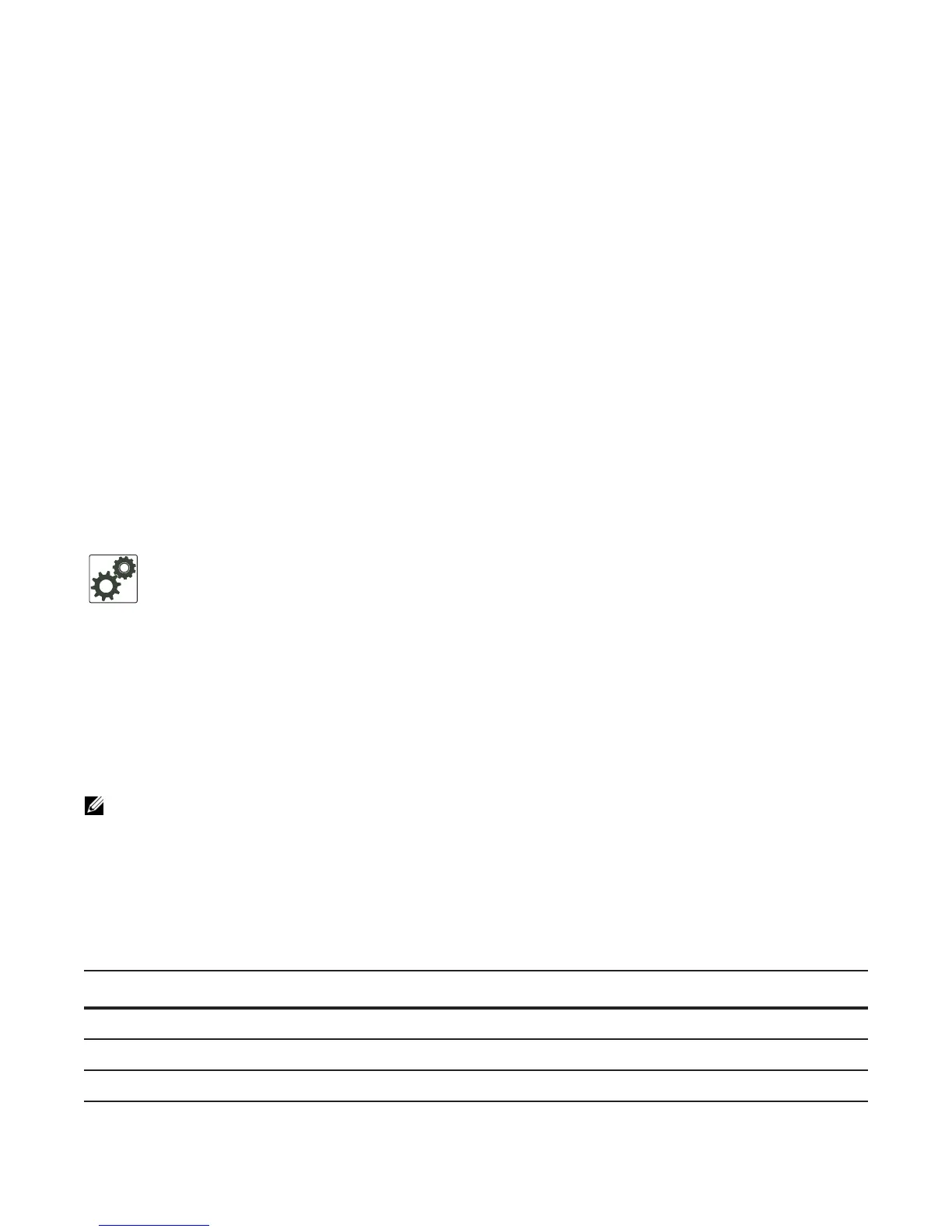Dynamic Host Configuration Protocol (DHCP) | 179
DHCP Snooping
DHCP snooping protects networks from spoofing. In the context of DHCP snooping, all ports are either
trusted or untrusted. By default, all ports are untrusted. Trusted ports are ports through which attackers
cannot connect. Manually configure ports connected to legitimate servers and relay agents as trusted.
When you enable DHCP snooping, the relay agent builds a binding table—using DHCPACK messages—
containing the client MAC address, IP addresses, IP address lease time, port, VLAN ID, and binding type.
Every time the relay agent receives a DHCPACK on an trusted port, it adds an entry to the table.
The relay agent then checks all subsequent DHCP client-originated IP traffic (DHCPRELEASE,
DHCPNACK, and DHCPDECLINE) against the binding table to ensure that the MAC-IP address pair is
legitimate, and that the packet arrived on the correct port. Packets that do not pass this check are dropped.
This check-point prevents an attacker from spoofing a client and declining or releasing the real client’s
address. Server-originated packets (DHCPOFFER, DHCPACK, DHCPNACK) that arrive on an untrusted
port are also dropped. This check-point prevents an attacker from impostering as a DHCP server to
facilitate a man-in-the-middle (MITM) attack.
Binding table entries are deleted when a lease expires, or the relay agent encounters a DHCPRELEASE,
DHCPNACK, DHCPDECLINE.
Enable DCHP Snooping
To enable DCHP snooping, follow these steps:
FTOS Behavior: Introduced in FTOS version 7.8.1.0, DHCP snooping was available for Layer 3 only
and dependent on DHCP relay agent (ip helper-address). FTOS version 8.2.1.0 extends DHCP
snooping to Layer 2. You do not have to enable relay agent to snoop on Layer 2 interfaces.
FTOS Behavior: Binding table entries are deleted when a lease expires or when the relay agent
encounters a DHCPRELEASE. The switch maintains a list of snooped VLANs. When the binding table
is exhausted, DHCP packets are dropped on snooped VLANs, while these packets are forwarded
across non-snooped VLANs. Because DHCP packets are dropped, no new IP address assignments
are made. However, DHCPRELEASE and DHCPDECLINE packets are allowed so that the DHCP
snooping table can decrease in size. After the table usage falls below the maximum limit of 4000
entries, new IP address assignments are allowed.
Note: DHCP server packets are dropped on all untrusted interfaces of a system configured for DHCP
snooping. To prevent these packets from being dropped, configure ip dhcp snooping trust on the
server-connected port.
Step Task Command Syntax Command Mode
1 Enable DHCP snooping globally.
ip dhcp snooping
CONFIGURATION
2 Specify ports connected to DHCP servers as trusted.
ip dhcp snooping trust
INTERFACE
3 Enable DHCP snooping on a VLAN.
ip dhcp snooping vlan
CONFIGURATION

